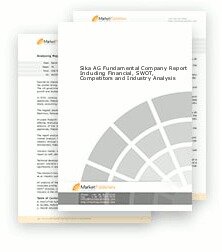What is Big Data Analytics and Why It is Important?
Content
- Why Is Big Data Important?
- 大數據分析:商業應用與策略管理 (Big Data Analytics: Business Applications and Strategic Decisions)
- Data processing:
- Small and Midsize Businesses
- Alternative data: Risky or essential?
- Connect with your customers and boost your bottom line with actionable insights.
- Data analytics informs effective marketing campaigns
Big data should be stored and maintained properly to ensure it can be used by less experienced data scientists and analysts. Insights business users extract from relevant data can help organizations make quicker and better decisions. Retailers may opt for pricing models that use and model data from a variety of data sources to maximize revenues. A data warehouse, which is a repository that stores large amounts of data collected by different sources. Big data can be used to improve training and understanding competitors, using sport sensors.
Studies in 2012 showed that a multiple-layer architecture was one option to address the issues that big data presents. A distributed parallel architecture distributes data across multiple servers; these parallel execution environments can dramatically improve data processing speeds. This type of architecture inserts data into a parallel DBMS, which implements the use of MapReduce and Hadoop frameworks. This type of framework looks to make the processing power transparent to the end-user by using a front-end application server.
Why Is Big Data Important?
Based on such factors which type of data are relevant is considered. Data analytics introduces automation in several data tasks such as migration, preparation, reporting, and integration. It removes manual inefficiencies and reduces the time and man hours required to complete data operations.

Centralized computing means the data is stored on a central computer and processed by computing platforms like BigQuery. Financial Services Computing, data management, and analytics tools for financial services. Big data brings together data from many disparate sources and applications. Traditional data integration mechanisms, such as extract, transform, and load generally aren’t up to the task. It requires new strategies and technologies to analyze big data sets at terabyte, or even petabyte, scale. With the advent of the Internet of Things , more objects and devices are connected to the internet, gathering data on customer usage patterns and product performance.
大數據分析:商業應用與策略管理 (Big Data Analytics: Business Applications and Strategic Decisions)
The choice of approach depends on the computational and analytical resources available for data processing. As machine learning improves and becomes a table stakes feature in analytics suites, don’t be surprised if the human element initially gets downplayed, before coming back into vogue. Hadoop and MongoDB can be used together for big data analytics to store, integrate, and process big data in a distributed environment. Understanding customer shopping habits and suggesting relevant products and services to them. Big data refers to structured, semi-structured, or unstructured data that is huge not only in Volume but also Velocity and Variety. Solution Data warehouse modernization Solve for today’s analytics demands and seamlessly scale your business by moving to Google Cloud’s modern data warehouse.
Combining predictive and prescriptive capabilities is often a key first step in solving business problems and driving smarter decisions. Augmented analyticsrefers to the use of ML/AI techniques to transform how insights from analytics are developed, consumed and shared. Augmented analytics includes natural language processing and conversational interfaces, which allow users without advanced skills to interact with data and insights. While both are valuable to every organization for different reasons, the market as a whole is changing. Data fabricis an emerging data management design that enables augmented data integration and sharing across heterogeneous data sources.
Data processing:
Big data technologies like cloud-based analytics can significantly reduce costs when it comes to storing large amounts of data . Plus, big data analytics helps organizations find more efficient ways of doing business. Traditional D&A platforms are challenged to handle increasingly complicated analytics, and the total cost of ownership of on-premises solutions continues to grow because of the complexity, increased resources and maintenance of the environment.

The online archive feature in Atlas allows users to maintain and query data in both Atlas cluster and Atlas Data Lake, thus reducing cost of data storage and ensuring data quality at all times. Looker An enterprise platform for business intelligence, data applications, and embedded analytics. Insight from big data can help retail enterprises better understand their customers’ preferences and behaviors. With that understanding, a retailer can hyper-personalize marketing initiatives and shopping experiences that redefine the customer experience. Variety refers to the formats that data comes in, such as email messages, audio files, videos, sensor data, and more. Classifications of big data variety include structured, semi-structured, and unstructured data.
Small and Midsize Businesses
Organizations can use big data analytics systems and software to make data-driven decisions that can improve business-related outcomes. The benefits may include more effective marketing, new revenue opportunities, customer personalization and improved operational efficiency. With an effective strategy, these benefits can provide competitive advantages over rivals. Big data analytics is the often complex process of examining big data to uncover information — such as hidden patterns, correlations, market trends and customer preferences — that can help organizations make informed business decisions. Much in the same line, it has been pointed out that the decisions based on the analysis of big data are inevitably “informed by the world as it was in the past, or, at best, as it currently is”. Fed by a large number of data on past experiences, algorithms can predict future development if the future is similar to the past.
The cost of an SAN at the scale needed for analytics applications is much higher than other storage techniques. Today’s exabytes of big data open countless opportunities to capture insights that drive innovation. Diagnostics analytics helps companies understand why a problem occurred. Big data technologies and tools allow users to mine and recover data that helps dissect an issue and prevent it from happening in the future.
This means that they can perform data analysis more efficiently, identify patterns, and successfully predict future trends. However, knowledge transfer and data confidentiality could present business challenges in outsourcing. Unstructured Data Must of the data stored in an enterprise’s systems doesn’t reside in structured databases. Instead, it is unstructured data, such as email messages, images, reports, audio files, videos and other types of files. This unstructured data can be very difficult to search—unless you have advanced artificial intelligence capabilities.
- This creates a foundation for better decisions by leveraging sophisticated and clever mechanisms to solve problems .
- Big data analysis was tried out for the BJP to win the 2014 Indian General Election.
- This can be data of unknown value, such as Twitter data feeds, clickstreams on a web page or a mobile app, or sensor-enabled equipment.
- Let’s use Facebook as an example—it generates more than 500 terabytes of data every day.
- They look for any errors or inconsistencies, such as duplications or formatting mistakes, and organize and tidy up the data.
Tools like RapidMiner, ElasticSearch etc. help find trends and patterns in big data. Solution Smart analytics Google Cloud’s fully managed serverless analytics platform empowers your business while eliminating constraints of scale, performance, and cost. BigQuery Serverless, highly scalable, and cost-effective multicloud data warehouse designed for business agility. Those insights help companies enhance performance, boost competitiveness, and effectively adjust the business model for successful expansion into new markets. All Storage Products Cloud-based storage services for your business. Apigee API Management API management, development, and security platform.
Dataprep Service to prepare data for analysis and machine learning. Data Cloud Alliance An initiative to ensure that global businesses have more seamless access and insights into the data required for digital transformation. AI Solutions Add intelligence and efficiency to big data analytics your business with AI and machine learning. Databases Solutions Migrate and manage enterprise data with security, reliability, high availability, and fully managed data services. Open Source Databases Fully managed open source databases with enterprise-grade support.
Alternative data: Risky or essential?
For example, big data helps insurers better assess risk, create new pricing policies, make highly personalized offers and be more proactive about loss prevention. The onslaught of IoT and other connected devices has created a massive uptick in the amount of information organizations collect, manage and analyze. Along with big data comes the potential to unlock big insights – for every industry, large to small. In addition to the increasing velocities and varieties of data, data flows are unpredictable – changing often and varying greatly. It’s challenging, but businesses need to know when something is trending in social media, and how to manage daily, seasonal and event-triggered peak data loads.
Connect with your customers and boost your bottom line with actionable insights.
This has posed security concerns regarding the anonymity of the data collected. While many vendors offer off-the-shelf products for big data, experts promote the development of in-house custom-tailored systems if the company has sufficient technical capabilities. The data lake allows an organization to shift its focus from centralized control to a shared model to respond to the changing dynamics of information management. This enables quick segregation of data into the data lake, thereby reducing the overhead time.
Data analytics informs effective marketing campaigns
Your investment in big data pays off when you analyze and act on your data. Build data models with machine learning and artificial intelligence. Selecting from the vast array of big data analytics tools and platforms available on the market can be confusing, so organizations must know how to pick the best tool that aligns with users’ needs and infrastructure. With high volumes of data coming in from a variety of sources and in different formats, data quality management for big data requires significant time, effort and resources to properly maintain it. NoSQL databases, which are non-relational data management systems that are useful when working with large sets of distributed data.
Big data analytics encompasses modern tools and techniques used to collect, process, and analyze data that is huge in size, fast-changing, diverse, and can generate value for enterprises. Big data is too complex to manage with traditional tools and techniques. In this article, we discuss some important aspects of big data and how to overcome big data analytics challenges using MongoDB.
Hence, there is seen by some to be a need to fundamentally change the processing ways. The Utah Data Center has been constructed by the United States National Security Agency. When finished, the facility will be able to handle a large amount of information collected by the NSA over the Internet. The exact amount of storage space is unknown, but more recent sources claim it will be on the order of a few exabytes.




